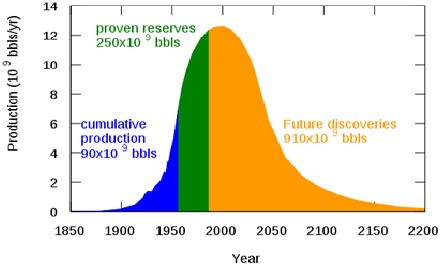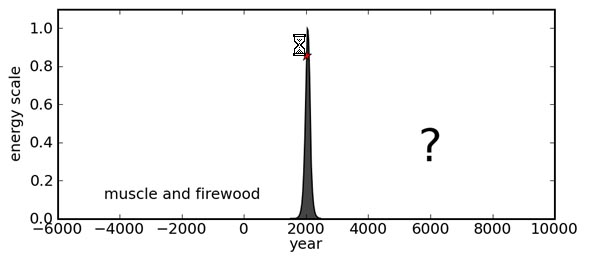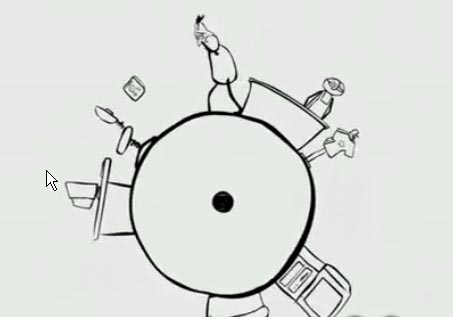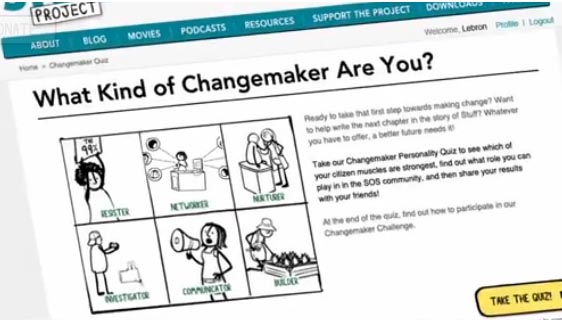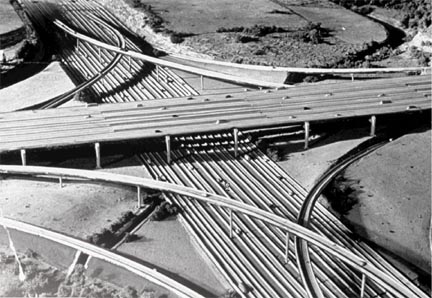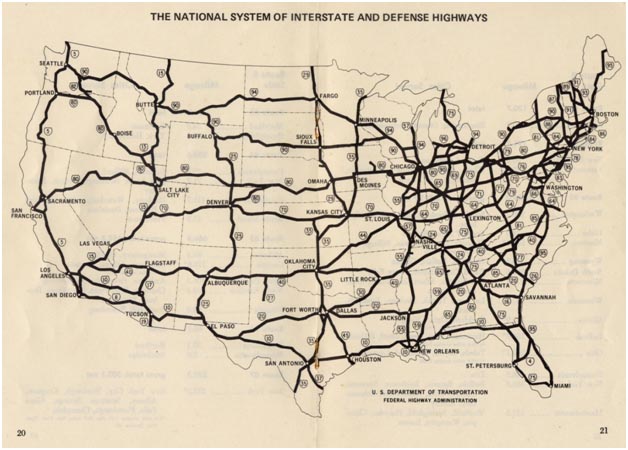A prime rule of blogging, I hear, is to keep your posts short. I’m about to start my blog by breaking that rule. I won’t do it again. I promise. Maybe. But please bear with me this once (or twice).
Who you calling an optimist?
I don’t want to go all Jimmy Carter on you, but we appear to face a malaise. And not only because I have a thing about cardigan sweaters. We seem, it’s tempting to say, to have fallen into a rut from which we can neither push nor pull ourselves forward, nor can we escape the muddy side walls by reversing out. We have a twin breakdown. Both our economic engine and our ecological source of sustenance have encountered roadblocks. And the problem, according to some, is that the detour signs point in opposite directions.
Ruts, breakdowns, roadblocks, detours. (Let’s not dwell on the observation that that entire opening paragraph is built on metaphors rooted in the automobile, which is arguably a proximate source of both our economic and environmental issues.) Pretty pessimistic terms.
No wonder. When you look at the statistics – whether you’re talking about growth, unemployment, climate change, income disparity, water scarcity, happiness, famine, or a valium-demanding number of other bars and graphs – the situation looks pretty dire, beyond the ability of any political leadership, let alone any individual, to solve. It leads, on the one hand, to the headline of a recent New York Times op-ed piece, Going Green But Getting Nowhere
On the other hand, maybe it’s all in our minds. Fed Reserve chairman, Ben Bernanke, said recently that it’s not really so bad and consumers are irrationally depressed. (Yeah, like the market is more rational?) It’s part of his job, though, to soothe the financial beasts and be the economic cheerleader-in-chief.
But that’s not how I meant to begin this blog
Let me start again, because a discussion on a topic called EcoOptimism really shouldn’t begin on a pessimistic note. I’ve no interest in adding to the end-of-the-world-is-nigh literature (though I do have a soft spot for post-apocalyptic B-movies). That admonishing approach – the one that also tells us that it’s all our fault for having no self-control or foresight or sense of something greater than our individual selves — strikes me as, at best, unhelpful. At worst, it’s counterproductive, alienating (if not angering) those who we need to enlist.
Perhaps more significantly, it points us away from solutions that, far from entailing economic collapse and far from endangering the “American way of life,” will bring us closer to goals and lifestyles that we (and countless philosophers, religious leaders, even politicians) have long sought.
And with those solutions we’ll create at least two things to hand down to our descendants: a better sense of who we are along with what it means to live a human life (sorry, those constitute one thing) and, well, a future. That’s because — at the risk of returning to the negativism I just spurned — if we screw up the environment, the main victim will be humanity. The Earth, in the long run, will be just fine. It just won’t include us, at least not in anything resembling our current forms of civilization or comfort.
There I go again. Pessimism. Hyperbole. (Actually, I’d dispute the latter accusation.) Stick to the topic, man.
Preface (the part that should have been above)
The amount of time, ink and electrons devoted to environmental topics has grown faster than a fertilizer-fed algae bloom. Aside from the daunting task of wading through the mountains of studies and opinions (and counter-opinions), an almost equal problem has been the chicken-little doom-and-gloom tone that seems to prevail, especially within the mass media. The result of this emphasis too often has meant that pursuing the solutions – when solutions are proposed — requires believing in a future, as-yet-intangible threat (sea levels will rise, oil will run out, but not today) and being willing to make undesirable changes to avoid it.
So, what is EcoOptimism?
The premise of EcoOptimism is that this is neither a viable nor productive approach, that most people do not respond well to being told they must change or have to make sacrifices. Sitting atop that is “green fatigue.” In my talks and teaching as well as general conversations, the topic of oversaturation, along with that fear that the problems are too big and therefore unsolvable, keeps dogging the potential for real solutions.

EcoOptimism takes a different approach, seeking to show how we can come out the other side of our concurrent ecological and economic crises (ECOoptimism, get it?) in a better place than we started; that not only will the planet be healthier, but we, as individuals, as families, as communities and as a species, can feel fulfilled and be more prosperous. It breaks the presumption, the false dichotomy, that environmentalism is at odds with our well-being and our happiness. It posits instead that we can eat our cake and have it, too.
OK, maybe that’s not the best way to put it, especially since we’re probably going to be talking about topics like the benefits of consuming less and of eating better.
It’s not enough to say there are solutions (though it’s a good start). We need solutions that are desirable; not solutions that are adopted only because they are necessary. I firmly believe there are futures that simultaneously save the environment that nurtures us while allowing, indeed helping, us to flourish as individuals and as the species homo sapiens.
EcoOptimism will attempt to cut through the negativism implied in so much of the environmental movement and explore the flip side – the opportunities that are presented by what appear to be constraints. The hope is that we’ll help enable a movement forward rather than backward, to a win-win solution in which both the environment and humanity are not only sustained, but can thrive.
And just how are we going to go about this save-the-world blog? (Yeah, yet another blog…)
The first answer is a hedge: I’m not totally sure yet. But I’m not supposed to say that.
A more useful answer is that I foresee this endeavor having two parts. One will be a vehicle (I just can’t get away from car-related terminology) to point out what others are doing and saying, along with a bit of soapbox-mounting. Not rabble-rousing so much as encouraging. (I guess I can’t really call it cheerleading since I accused Bernanke of doing just that.)
The other will be a conversation. We’re looking at questioning some of our fundamental assumptions (like ‘growth is good’) and, in some cases, creating new visions of our lives. No one person could have the breadth of knowledge to figure out the interwoven paths to and the implications for re-imagining the ways we work, live, eat, consume, travel and recreate. There are both too many subject areas involved and too many variations on the theme homo sapiens. (There are no one-size-fits-all solutions.) For that reason, EcoOptimism is looking to crowd-source our future(s). The optimist-in-chief (that’s me) will occasionally launch topics and then look to YOU for responses. We’re looking for input that is open-minded and constructive, future-oriented yet enticing in the present.
We seek a Future By Design, rather than a Future By Default.
About the optimist-in-chief:
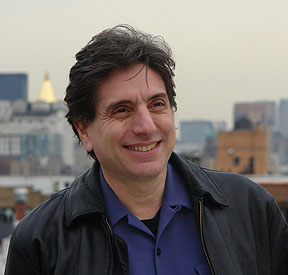
David Bergman runs an architectural practice that emphasizes the transparent inclusion of sustainable/eco design principles. David is also the founder of Fire & Water, a designer/manufacturer of eco lighting. He is a LEED Accredited Professional and an adjunct assistant professor at Parsons the New School for Design. He is a frequent contributor to GreenHomeGuide.com. His book, Sustainable Design: A Critical Guide, was published in 2012 by Princeton Architectural Press.




